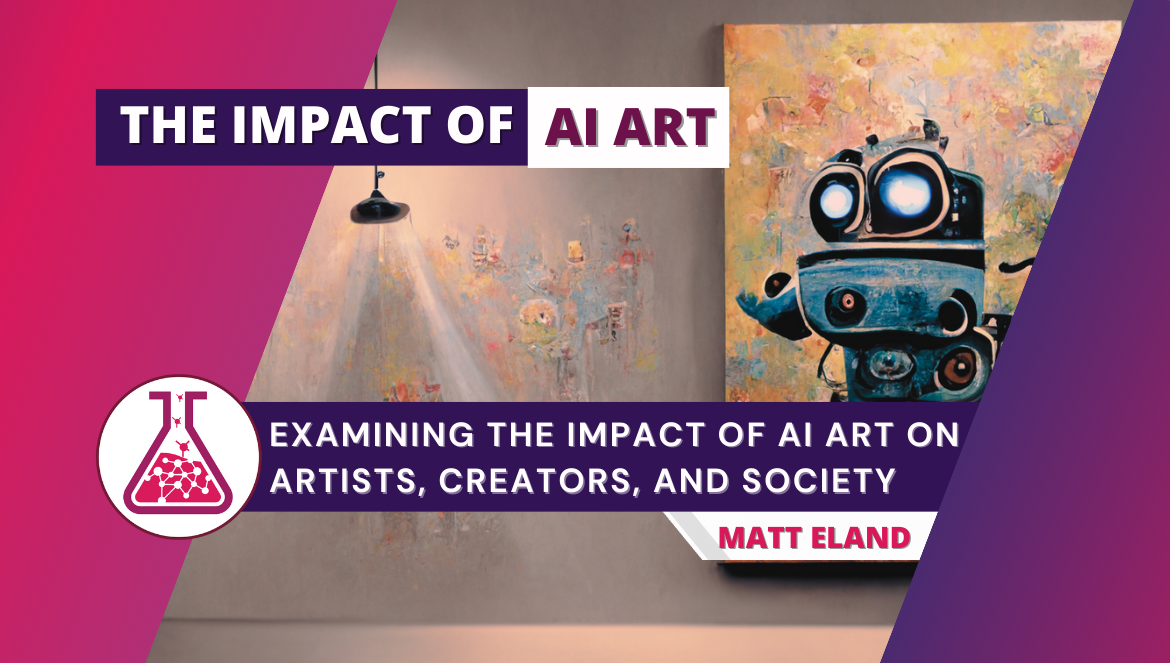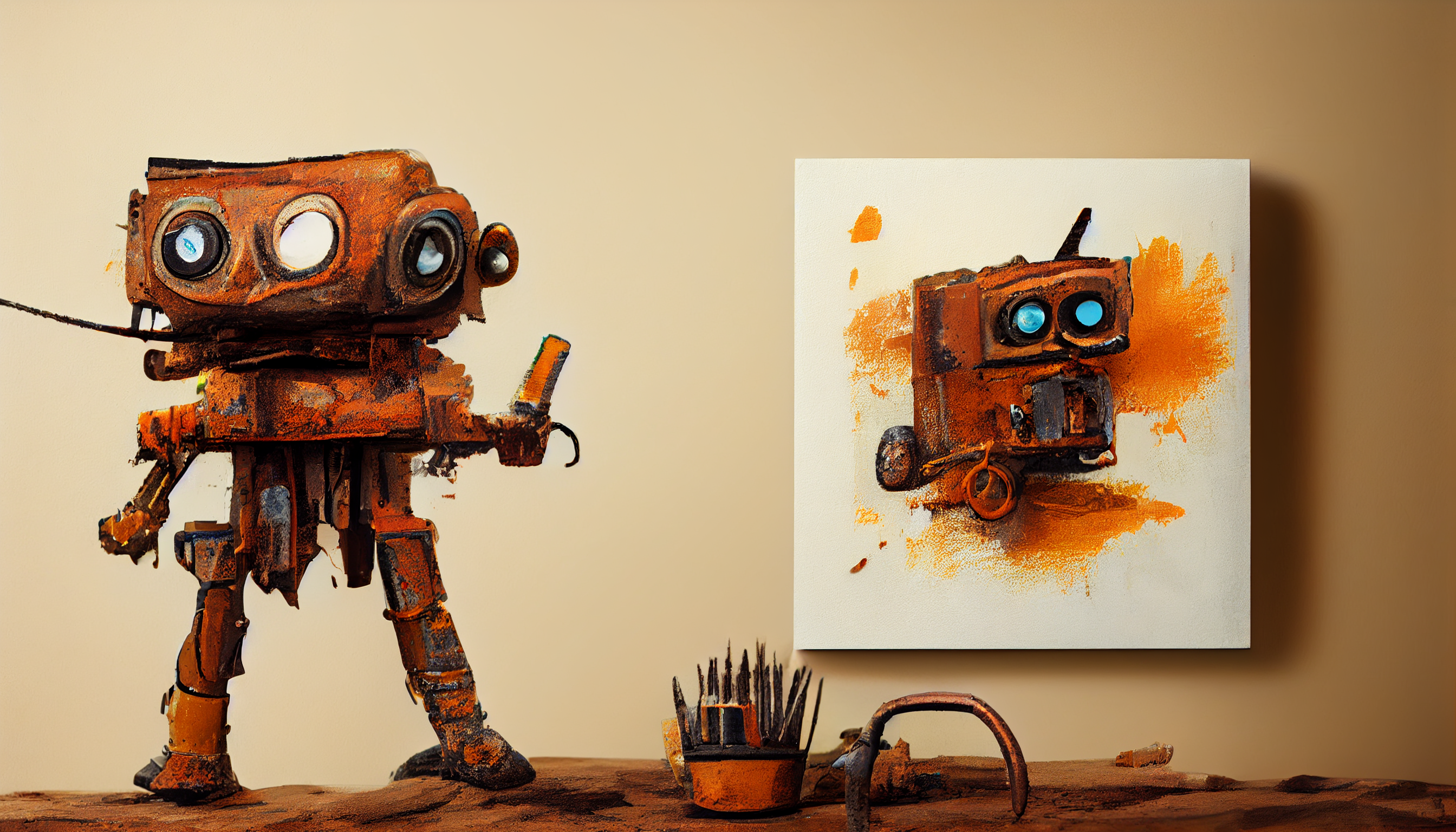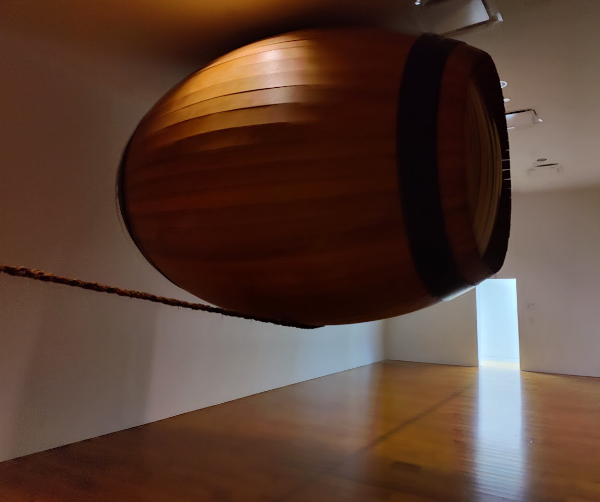
The Impact and Ethics of AI Art
Examining the impact of AI Art on artists, creators, and society
Cover image created by Matt Eland using MidJourney
Let’s talk artificial intelligence (AI) generated artwork and who is affected by it and the ethical questions this raises.
What is AI Art?
With the advent of transformer-based art generation systems like DALL-E, Stable Diffusion, MidJourney, and others, it is now possible for non-artistically-talented people like me to generate interesting and even beautiful pieces of art using AI.
They do this by typing in a prompt and then receiving an image or set of images from a pre-trained transformer-based model that has been trained on historical images with text descriptions.
Note: Transformers can also be used to generate text content. See my article on writing stories with transformers for more details on that.
Here’s an image generated from an artificial intelligence model:

This was created using MidJourney using the following prompt:
deep ocean, vibrant whirlpool to another dimension, eerie
While this is hardly a work of art, it is at least interesting. And, perhaps more to the point, it is something that I couldn’t make on my own.
But perhaps it also might be something that nobody would have painted on their own. After all, the image generation was guided by prompts that I came up with to try to match a vision in my imagination.
But is it ethical? And if it’s not, who did this piece of artwork impact?
Who is Impacted by AI Art?
If AI artwork had no negative impact, we wouldn’t need this article.
However, these systems do impact people and we need to talk about that.
Content Creators
Let’s talk first about who is helped by AI art: primarily people like me.
Consider my needs as a hobbyist AI / software engineering blogger. I’m operating at a loss to educate my community on topics I care about (while learning more myself)
I spend my own time in the evenings I want something topical and unique to use as a thumbnail image for each article. I want to get people thinking creatively about a topic by using something I know they’ve never seen before. My options are currently:
- Try to make my own using whatever skills I think I can come up with
- Hire an artist on Fiverr or similar
- Use a stock image site such as Shutterstock or Unsplash
- Use machine-generated artwork
- Not use a thumbnail image
At our core we all want artists to be paid and credited for their work. This means that commissioning artwork is the best options for reimbursing human artists. Second best would be stock image sites that pay artists for their work.
However, commissioning is expensive. Even using a service like Fiverr, you’re looking at $30 or more per cover image, plus the time delay and work on communicating with the artist. If the artwork doesn’t meet your needs, you may need to repeat that from another vendor.
If you’re someone like me and just making articles to educate the community and operating at a financial loss to do this, adding $30 per article stacks up pretty quickly in terms of expenses - especially at the rate I often write.
Because of this, I’ve gone with stock images in the past. AI Art is a new option that gives me something unique and interesting and gives me the ability to partially control the generated artwork.
If I went with a major paid product that I was looking to profit from, I’d want to commission an artist. However at my small scale doing things for the benefit of my community, AI art helps me amplify my impact.
Artists
Now that we discussed who’s most helped by AI art, let’s talk about who’s most harmed by it: artists.
Artists are the most at risk from AI art generation systems. After all, if I can use my words to quickly generate images without needing artistic skills, why would I need an artist?
Of course, that’s an intentionally short-sighted and antagonistic question to ask, but it is the fear that these systems generate.
Let’s talk about how these systems work, because this is at the core of some of those fears:
Transformer-based systems are built off of the collective works of both living and dead artists. We train these large models based on available artwork and pair them with text descriptions of the artwork. Once we amass enough artwork from various sources, a large model is generated that can then be used to generate new artwork based on textual descriptions.

Robot Painting Itself generated by Matt Eland using MidJourney
Unfortunately, transformer-based systems are not good at determining how they came up with an answer or even what source images were used to create a resulting image. As a result, these systems fundamentally cannot credit the original artwork, other than by listing all artists and pieces of art that came up with.
This means that artists cannot be credited directly by current transformer-based systems, except in aggregate.
The truly nasty aspect of this is that artists may not even be aware, informed, or compensated that their art was used to train a transformer-based model. It’s possible that art an artist posted on the internet could be used without their knowledge or compensation to train a model. The artist may have only intended to share that art with a community of other artists or anyone looking to gain inspiration from it, but instead that art is now being used to help calibrate a commercial art generation system.
However, it’s also possible that these commercial systems only take curated content through galleries that have paid artists for their content and explicitly gathered blanket permissions around that artwork.
Either way, artists may now find themselves competing for funding with systems trained on their own artwork and styles.
Finally, because transformer-based systems only work using historical art they’ve been trained on, these systems will not be innovating new artwork on their own. Without new artists to keep artwork relevant, these AI generated systems wil only rehash the same content and styles over time.
Photographers
Photographers are impacted by AI art systems in a way similar to traditional artists, because these same systems can generate stunning vistas, though not entirely convincingly yet.

Landscape image generated by Matt Eland using MidJourney
However, photographers are often needed to photograph recognizable landmarks and settings as well as current events, so the impact is not as severe as it is with artists.
That being said, I do expect that some people who used traditional photography in the past for images may now switch to AI generated artwork or AI generated photography for some of their needs.
Stock Photo Sites
Stock photo sites are being actively threatened by AI artwork because people like me are realizing they can generate unique art with a greater fit to their needs and a larger degree of control.
Because of this, a number of these organizations such as ShutterStock and Canva are scrambling to add AI art generation capabilities to their platforms.
To these organizations this is a business necessity since people are actively using AI art instead of their platforms and because their competitors are working on similar systems.
In other words, the emerging industry of AI art is currently pushing new features to established industries as differentiators, and these features are quickly becoming table stakes that established sites will need to meet in able to survive.
And, in all of this rush to survive, who is going to pay attention to ethics?
Minorities
Historically artwork has been created by and for people who look like me. We haven’t had as many pieces of art around people of color.
This is a problem in the art community that people are actively working to remedy, and I am thankful for that.
However, because our transformer-based systems are trained on historical artwork, any biases in those artwork is likely to be preserved and even replicated by these new systems.
Case in point, when I ask MidJourney for images involving people and I do not describe the people, it tends to default to caucasian men and women.

4 Separate Images on Faces with Glasses generated by Matt Eland using MidJourney
This bias in race for rendering artwork is a real problem, especially given biases in race we’ve seen elsewhere in AI. When training new transformer-based models, organizations will need to make sure they do not over-represent people by ethnicity or gender or their resulting systems will carry these same biases.
Consumers
AI art doesn’t just impact artists, creators, and the art industry; it impacts everyone, because art impacts everyone.
If you browse the web, you’re going to run across AI artwork in the future. Like all artwork, it’s going to convey something to you and make you feel a certain way. It may inspire you to imagine new things, or help set the tone for some supporting text.
All of these impacts occur in just a split second, but the impact is still present.
Personally, I’ve found myself really interested by AI art. It’s new and different and it often tickles something in my abstract and organized mind that makes me view the world differently.
In fact, my wife and I took a day trip to the local art museum between teaching cohorts earlier this year and I found myself somewhat disappointed by the art that was there because it all focused on the same topics and scenes. There was a “sameness” to the art that left me sad and wishing for something more imaginative.
However, there was also a giant barrel suspended on a rope in a small gallery and it was captivating to my mind in its scale and alien nature.

Spirit by Mel Chin at the Columbus Museum of Art
Meanwhile, my wife was unmoved by the gargantuan barrel and instead preferred a few older landscape paintings, which only serves to reinforce the idea that art is subjective.
AI Art? Good, Bad, or Ugly?
Like it or not, AI art is is now available and accessible to the masses.
Will content creators like myself be able to benefit from AI art to share things in interesting new ways? Yes, absolutely.
Will artists be negatively impacted by AI artwork? Most certainly.
Will AI art disrupt the industry? I think we’re seeing that it’s already doing this.
Is this where we really want to go? Do we want to be pushing creative individuals out of the way and replacing them with machines? Probably not.
But we’re also unleashing a new form of creativity: creativity in directing these systems to generate new things using text prompts. Creativity in what images we use to train new transformer models.

Woman looking at a Robot generated by Matt Eland using MidJourney
When rock and roll came out it disrupted the music industry. It unleashed new forms of creativity that were wildly different from the forms of music that came before. Yes, it made it somewhat harder for “traditional” musicians to innovate and gain attention, but there were still places for communities of musicians like that and those who preferred that style of music.
AI art, like rock and roll, is disrupting the norm and enabling radically new things with artwork.
Unlike the rock and roll revolution, however, those AI art systems are built upon the work of human artists, and those human artists deserve to be paid for their work.
I strongly believe that any company selling AI generated artwork tools needs to be transparent about the sources they used, and how they compensated those sources. This may require legislation at some point in the near future.
I also firmly believe that we need to prioritize research into ways of making transformer-based systems more transparent in the sources they used for particular content they generated.
As a content creator, I am perfectly happy paying a monthly subscription for a tool that I know compensates the artists it based its images on and allows me to credit them by name for their works of inspiration.
And, frankly, I’m spending far more time than I care to admit staring in wonder at AI systems that can generate compelling pieces of art that let me express my imagination.
But we need to make sure these emerging systems serve all of us.


